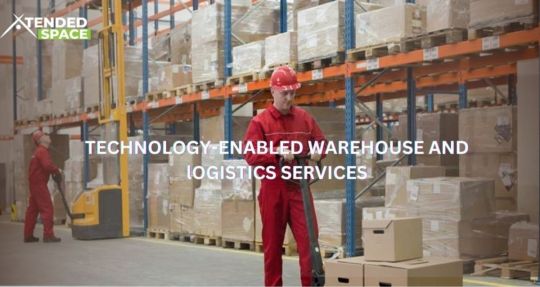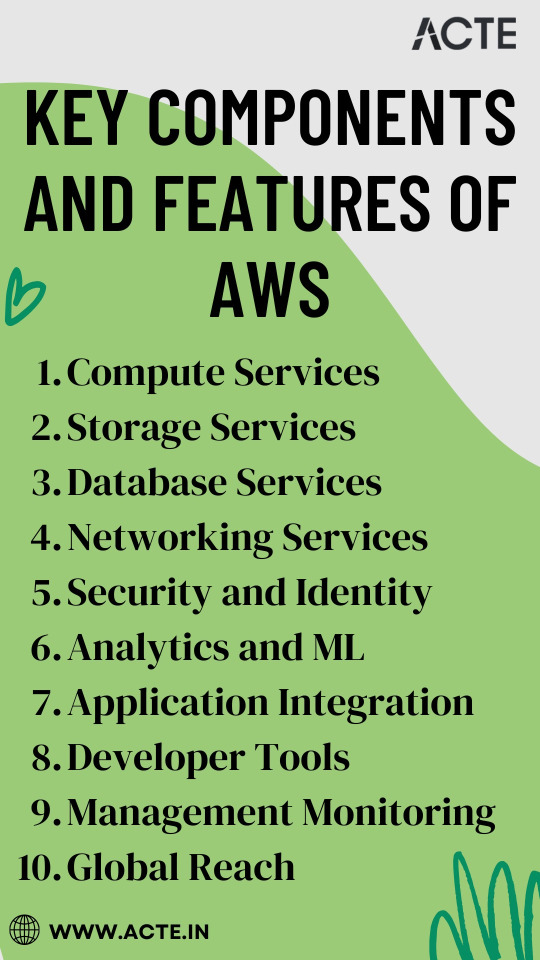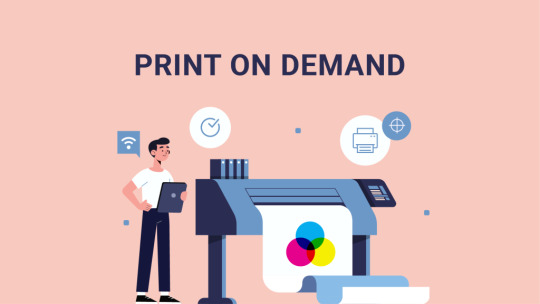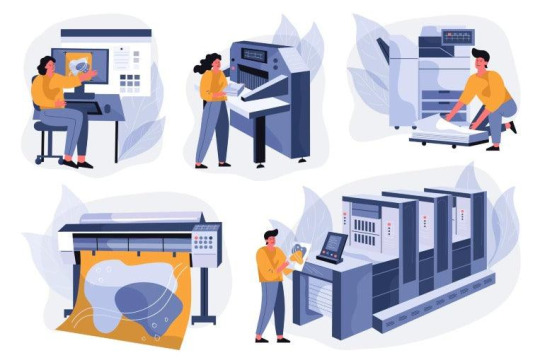#Flexible Warehousing
Explore tagged Tumblr posts
Text
In Harbor City, California, finding reliable warehousing and storage solutions can be a daunting task. Fortunately, Agogo Cargo, a leading logistics company in Harbor City, California, offers a beacon of excellence in this realm. Understanding the pivotal role that streamlined warehouse management plays in optimizing operations, we stand as your trusted partner in meeting your storage needs with precision and efficiency.
0 notes
Text
Warehouse In Bhiwandi? An informed decision.
Bhiwandi is one of Asia's biggest warehousing hubs.It is a major contributor to the logistic landscape of Mumbai and India due to close proximity to Nhava Seva port of Mumbai and servicing Mumbai ,India’s financial capital.
Bhiwandi is 40 KM from Mumbai and it easily services both south and north Mumbai with equal ease. Warehousing in Bhiwandi has predominantly been unorganised with major inventory contributed by locals developing compounds with developers .These compounds range from 1500 sq. ft. to 50,000 sq ft.There has been lot of illegal construction around Bhiwandi and FSI violation thereby prompting local authority to undertake demolition drive .These facilities can be categorised as B,C grade facilities with a mix of factories and warehousing.E-commerce boom has demanded need of Grade A warehouse with state of art facility and thereby leading to development of facility by blues chip investor and big developers.Renaissance Industrial Smart City is one of such project with all necessary approvals in place and the over all area notified if 422 acres.Currently it host amazon,all-cargo many more client catering to Pharma,Metal,E-commerce,Food,Plastic etc. Arihant & Sumeet logistics park is also well known in bhiwandi. Many institutional investors are now eyeing to provide world class logistics in bhiwandi thereby increasing the interest and price of the land in Bhiwandi. The government of Maharashtra has further facilitated and reformed land acquisition rules to ensure development of world class logistics facility in this region.
It is strategically located and therefore logistically viable and competitive pricing.We will be discussing various factors one needs to consider while leasing a warehouse or godown in bhiwandi.
Warehouse in bhiwandi is divided into various clusters called compounds.These compounds are developed by joint ventures between local developers and landowners or by leading developer.The compounds are maintained by local land owners or developers depending on their terms of development.The factors which needs to be considered while leasing of Grade-B &C godowns are as below:The typical route’s having a warehousing cluster in bhiwandi are as below.
Kasheli- Rehnal road
Anjur phata - Mankoli
Mankoli to Diva
Mankoli - kalyan bypass
Kalyan bypass- Vadape
We have compiled a list of major compounds and their warehousing prices along with other ancillary charges.

* The warai charges range from 0.5 Rs/Sq. Ft to 1.5 Rs/Sq ft.
**The maintenance charges range from 0.5 Rs/Sq. Ft to 1.25 Rs/Sq ft.
The rentals of Grade A warehouse with clear title and best in class facility ranges from Rs 18 to Rs 22 Per sq ft with maintenance.However the construction quality and amenities add value for logistics and manufacturing services.
Godown in Bhiwandi can be a tricky affair and an informed decision needs to be taken to ensure smooth functioning of your operation.
Due to huge demand in Bhiwandi post-GST, there was a shortage of large ready to move in warehouses, however as a large quantity of land is available on Nashik road, rentals will continue to remain affordable for clients who are ready to wait. However, identifying warehouse with a clear land title is a big challenge in Bhiwandi. On account of small and scattered land holdings in the hands of several villagers, identifying a contiguous land parcel of the relevant size for warehouse development is a big challenge and which requires due diligence to get foothold in those areas.
Godamwale is an exclusive discovery platform for warehouse,godown,cold storage ,3PL services.
You can search and book these services easily on our platform and get the proper guidance to make informed decisions.
On demand and Flexible warehousing is provided by godamwale across india. This on demand service is flexible scalable and affordable.
Source - https://godamwale.com/blog/warehouse/warehouse-bhiwandi
0 notes
Text
How to Ensure Compliance with Health and Safety Regulations in Rental Warehouses in Bangalore
Compliance with health and safety regulations is paramount for businesses utilizing rental warehouses in Bangalore. Companies must familiarize themselves with local regulations regarding warehouse operations, including guidelines for storage, employee safety, and equipment use. Regular safety audits and training sessions can help ensure that employees are aware of safety protocols and best practices. Additionally, businesses should work closely with rental warehouse providers to verify that the facility meets all health and safety standards. By prioritizing compliance, companies can minimize risks associated with liability and ensure a safe working environment for their employees, ultimately enhancing operational efficiency.
0 notes
Text
Technology-Enabled Warehouse And Logistics Services
Discover seamless warehouse storage space and logistics solutions at Xtended Space, your trusted storage platform in the bustling Delhi NCR region. Our cutting-edge AI-driven technology ensures optimized storage and efficient logistics management, tailored to meet your unique needs.

#household storage#secure storage facilities#smart warehousing solutions#storage solutions#warehouse storage#storage#Flexible Storage Options
1 note
·
View note
Text
Flexible warehousing solutions in Delhi are critical to effective supply chain management. These solutions offer businesses the flexibility and scalability to manage their inventory efficiently while saving significant costs. For more information call us at 9711203880.
0 notes
Text
Role models: circular economy examples in manufacturing
Circular manufacturing or circular economy is a means of production, distribution, and consumption where producers bring materials from end-of-life goods back into the economy through reuse, recycling, and recovery instead of disposing of them as waste.
1. Stora Enso Sunila Mill: a pulp-based refinery plant
Stora Enso Sunila Mill in Finland was the first in the world to extract lignin in a pulp-based refinery plant. The pulp and paper industry is one of the largest manufacturing sectors in the world. It uses 12-15 percent of the wood from forests, which could double by 2050, according to the World Wildlife Fund (WWF).
To make the most of the wood they use, Stora Enso Sunila Mill, which owns one of the most extensive private forests in the world, has adopted the circular economy by reusing, recycling, and recovering materials at the mill.
The business sources pulp from their sustainably managed private forests to make paper and packaging to replace plastic. They also produce circular industrial products that are alternatives to fossil fuel-based non-renewable products
2. ReSolved Technologies: Closed-loop plastic recycling
A Dutch startup, ReSolved Technologies, has developed a closed-loop recycling solution for engineering plastics in electronic devices and automobiles.
Engineering plastics are complex and contain additives that make recycling difficult. 95 per cent of these plastics are downcycled, incinerated, or landfilled.
ReSolved Technologies’ solvent-based recycling technique removes additives like fillers, flame retardants, and colourants, and separates different types of plastics. The recycled plastics are good quality and they can be used to make engineering plastics again. This technology can be used to complement existing mechanical recycling facilities for plastics.
ReSolved Technologies closes the materials loop by turning electronic waste into new electronic devices. Their plastic recycling technology prevents the extraction of fossil fuels for new production and reduces plastic waste and pollution problems.
3. Batch.Works: Smart and circular manufacturing
Another Dutch startup, Batch.Works, offers 3D printing for “Circular Manufacturing as a Service (CmaaS)” using AI-driven factories.
The company uses circular materials like recycled plastics or agricultural waste from traceable sources to make new parts for the manufacturing industry. They offer smart 3D printing to meet on-demand digital production for just-in-time manufacturing, thus reducing overproduction and waste.
The company has a take-back policy for its products to recycle materials and leverages digital warehousing services from third parties for flexibility and scaling. Its novel manufacturing model creates short supply chains to reduce transportation costs and increase agility.
The short supply chain and digital warehousing cut transport pollution and emissions, and small-batch production makes manufacturing sustainable and cost-effective for client firms.
And many more examples in the link:
#solarpunk#solarpunk business#solarpunk business models#solar punk#startup#reculture#circular manufacturing#circular economy#industrial ecosystems
6 notes
·
View notes
Note
are outdoor enclosures a requirement for the wolfdogs you breed? theyre usually mentioned as being an absolute necessity, but your dogs are already so different than what people usually say about wolfdogs like being safe and well behaved in public, so i was curious
This is a great question, but a difficult one to answer because it really depends on the situation, and the pairing I'm doing. With my lower contents there is a lot more flexibility because they are really stable and adaptable to a lot of different lifestyles, where as this upcoming high content litter my requirements are a lot more ironclad for things like owning your own home, an outdoor enclosure, past experience, etc
With my lower contents, if I had an applicant who was, for instance, a dog trainer with an active lifestyle who had a fenced yard and rotational 10x10 kennel runs or a series of indoor crates for dogs to settle in when they're not home? I 100% would place a dog with them without a true outdoor enclosure. This is someone with a means of containment for their dogs who can handle adolescent/teenager behaviors from a wolfdog with proper management through destructive phases without the dog ending up warehoused.
But I wouldn't accept that type of setup from a first-time primitive breed owner who's only had collies or goldens or something, because if the dog is a difficult adolescent and ends up spending a significant amount of time outside, it will get bored and escape the yard or be warehoused in a 10x10 without adequate enrichment or activity. But if that home has a 50x50 enclosure with enrichment set up already, then that dog will still lead a great life even if they end up being delegated to outdoor living.
14 notes
·
View notes
Text
How to Minimize Storage Costs: Using Short-Term Warehouse Rentals to Optimize Your Supply Chain
In today’s fast-paced business world, keeping costs low while maintaining efficiency is essential for staying competitive. One area where many companies struggle is storage. Whether you're dealing with seasonal fluctuations, growing inventory, or unexpected demand surges, managing warehouse space effectively can significantly impact your bottom line. Fortunately, there’s a smart solution to help businesses minimize storage costs: short-term warehouse rentals.

Here’s how using flexible warehouse options can optimize your supply chain, reduce unnecessary expenses, and improve your overall inventory cost management.
1. Lower Storage Costs with Flexible Solutions
Traditional long-term warehouse leases come with hefty upfront costs and financial commitment. These agreements can lock you into fixed spaces for extended periods, even when you don't need that extra storage capacity. Short-term warehouse rentals offer a more cost-effective alternative, allowing businesses to rent space on a temporary basis based on current needs. By avoiding long-term commitments, companies can adjust warehouse space based on changing inventory levels, significantly lowering overhead costs.

2. Adapt to Seasonal Demand and Fluctuations
Businesses that experience seasonal demand or sudden spikes in inventory often struggle to manage storage effectively. Holding excess stock during slow months means paying for unused space, while scrambling for extra space during peak periods can lead to missed sales opportunities. Short-term warehouse rentals provide the flexibility to scale your storage up or down as needed, helping you meet demand without overcommitting to unused space. This ensures you only pay for storage when necessary, improving your cash flow and reducing excess inventory costs.
3. Streamline Your Supply Chain
Efficient supply chain management is key to delivering products on time and maintaining customer satisfaction. When inventory is stored in multiple locations or at distant warehouses, it can lead to delays, extra handling costs, and longer shipping times. By integrating short-term warehouse options into your supply chain, you can place inventory closer to demand centers, reducing transportation costs and delivery times. This enhanced efficiency helps create a more responsive supply chain and ultimately a better customer experience.
4. Increase Inventory Turnover and Reduce Overhead
Holding inventory for extended periods can tie up valuable capital and increase the costs associated with maintaining that stock. By utilizing short-term warehouse space, you can focus on moving inventory more quickly, which promotes higher turnover rates. With less inventory sitting idle, you reduce storage costs and optimize your overall inventory management. This practice ensures that products are available when needed but are not stored for longer than necessary, keeping your storage costs at a minimum.

5. Scalable Storage for Growing Businesses
For startups or growing companies, the need for storage space can fluctuate dramatically as business operations expand. Committing to a large, long-term lease might not be financially feasible in the early stages, and underutilized space can quickly become an unnecessary expense. Short-term warehouse rentals allow businesses to scale their storage needs with ease, providing affordable solutions for expanding inventory without the financial burden of long-term commitments.
6. Simplified Inventory Cost Management
Effective inventory cost management is all about balancing storage costs with inventory levels. Short-term warehouse rentals offer a streamlined way to control costs, as they allow businesses to store only what’s necessary. As inventory fluctuates, adjusting storage space accordingly ensures you're not overpaying for underused space. This flexibility in warehousing helps companies avoid the need for excessive inventory, further minimizing costs and boosting profitability.

2 notes
·
View notes
Text
Warehousing Services in India by Everfast: Your Reliable Partner for Efficient Storage Solutions
In today's fast-paced business environment, efficient warehousing is essential for the smooth functioning of supply chains. Whether you're a manufacturer, retailer, or distributor, having a reliable warehousing partner can significantly impact your business operations. This is where Everfast comes into the picture, offering top-notch warehousing services across India to cater to your storage and distribution needs. Why Choose Everfast for Warehousing Services in India? Everfast has established itself as a trusted name in the logistics and warehousing industry in India. With a focus on delivering high-quality services, Everfast ensures that your goods are stored safely and efficiently, allowing you to focus on your core business activities. Here are some compelling reasons to choose Everfast for your warehousing needs:
Strategic Locations Across India Everfast operates a network of strategically located warehouses across major cities in India. This ensures that your products are stored close to your target markets, reducing transportation costs and delivery times. Whether you're looking for warehousing solutions in Delhi, Mumbai, Chennai, or Bangalore, Everfast has you covered.
State-of-the-Art Facilities The warehousing facilities provided by Everfast are equipped with modern technology and infrastructure to ensure the safety and security of your goods. From temperature-controlled storage for perishable items to high-security zones for valuable products, Everfast offers a wide range of storage solutions tailored to your specific needs.
Efficient Inventory Management Everfast employs advanced inventory management systems to keep track of your stock in real-time. This ensures accurate inventory levels, reduces the risk of stockouts, and allows for seamless order fulfillment. With Everfast, you can rest assured that your inventory is in capable hands.
Customized Solutions for Every Business Every business has unique warehousing requirements, and Everfast understands this. That's why they offer customized warehousing solutions to meet the specific needs of different industries. Whether you're in the FMCG sector, automotive industry, or e-commerce, Everfast provides tailored solutions to optimize your supply chain.
Cost-Effective and Scalable Services Everfast offers cost-effective warehousing solutions that can be scaled up or down based on your business needs. This flexibility ensures that you only pay for the space and services you require, making it an ideal choice for businesses of all sizes. Additional Services Offered by Everfast In addition to warehousing, Everfast offers a range of value-added services to enhance your supply chain operations. These include: Transportation and Distribution: Seamless integration of warehousing with transportation services for efficient last-mile delivery. Packaging and Labeling: Professional packaging and labeling services to ensure your products are ready for market. Order Fulfillment: Streamlined order processing and fulfillment to meet customer demands quickly and accurately. Conclusion In a country as vast and diverse as India, having a reliable warehousing partner like Everfast can make all the difference in your supply chain operations. With strategically located warehouses, state-of-the-art facilities, and a commitment to customer satisfaction, Everfast is your go-to choice for warehousing services in India.
2 notes
·
View notes
Text
Essential Predictive Analytics Techniques
With the growing usage of big data analytics, predictive analytics uses a broad and highly diverse array of approaches to assist enterprises in forecasting outcomes. Examples of predictive analytics include deep learning, neural networks, machine learning, text analysis, and artificial intelligence.
Predictive analytics trends of today reflect existing Big Data trends. There needs to be more distinction between the software tools utilized in predictive analytics and big data analytics solutions. In summary, big data and predictive analytics technologies are closely linked, if not identical.
Predictive analytics approaches are used to evaluate a person's creditworthiness, rework marketing strategies, predict the contents of text documents, forecast weather, and create safe self-driving cars with varying degrees of success.
Predictive Analytics- Meaning
By evaluating collected data, predictive analytics is the discipline of forecasting future trends. Organizations can modify their marketing and operational strategies to serve better by gaining knowledge of historical trends. In addition to the functional enhancements, businesses benefit in crucial areas like inventory control and fraud detection.
Machine learning and predictive analytics are closely related. Regardless of the precise method, a company may use, the overall procedure starts with an algorithm that learns through access to a known result (such as a customer purchase).
The training algorithms use the data to learn how to forecast outcomes, eventually creating a model that is ready for use and can take additional input variables, like the day and the weather.
Employing predictive analytics significantly increases an organization's productivity, profitability, and flexibility. Let us look at the techniques used in predictive analytics.
Techniques of Predictive Analytics
Making predictions based on existing and past data patterns requires using several statistical approaches, data mining, modeling, machine learning, and artificial intelligence. Machine learning techniques, including classification models, regression models, and neural networks, are used to make these predictions.
Data Mining
To find anomalies, trends, and correlations in massive datasets, data mining is a technique that combines statistics with machine learning. Businesses can use this method to transform raw data into business intelligence, including current data insights and forecasts that help decision-making.
Data mining is sifting through redundant, noisy, unstructured data to find patterns that reveal insightful information. A form of data mining methodology called exploratory data analysis (EDA) includes examining datasets to identify and summarize their fundamental properties, frequently using visual techniques.
EDA focuses on objectively probing the facts without any expectations; it does not entail hypothesis testing or the deliberate search for a solution. On the other hand, traditional data mining focuses on extracting insights from the data or addressing a specific business problem.
Data Warehousing
Most extensive data mining projects start with data warehousing. An example of a data management system is a data warehouse created to facilitate and assist business intelligence initiatives. This is accomplished by centralizing and combining several data sources, including transactional data from POS (point of sale) systems and application log files.
A data warehouse typically includes a relational database for storing and retrieving data, an ETL (Extract, Transfer, Load) pipeline for preparing the data for analysis, statistical analysis tools, and client analysis tools for presenting the data to clients.
Clustering
One of the most often used data mining techniques is clustering, which divides a massive dataset into smaller subsets by categorizing objects based on their similarity into groups.
When consumers are grouped together based on shared purchasing patterns or lifetime value, customer segments are created, allowing the company to scale up targeted marketing campaigns.
Hard clustering entails the categorization of data points directly. Instead of assigning a data point to a cluster, soft clustering gives it a likelihood that it belongs in one or more clusters.
Classification
A prediction approach called classification involves estimating the likelihood that a given item falls into a particular category. A multiclass classification problem has more than two classes, unlike a binary classification problem, which only has two types.
Classification models produce a serial number, usually called confidence, that reflects the likelihood that an observation belongs to a specific class. The class with the highest probability can represent a predicted probability as a class label.
Spam filters, which categorize incoming emails as "spam" or "not spam" based on predetermined criteria, and fraud detection algorithms, which highlight suspicious transactions, are the most prevalent examples of categorization in a business use case.
Regression Model
When a company needs to forecast a numerical number, such as how long a potential customer will wait to cancel an airline reservation or how much money they will spend on auto payments over time, they can use a regression method.
For instance, linear regression is a popular regression technique that searches for a correlation between two variables. Regression algorithms of this type look for patterns that foretell correlations between variables, such as the association between consumer spending and the amount of time spent browsing an online store.
Neural Networks
Neural networks are data processing methods with biological influences that use historical and present data to forecast future values. They can uncover intricate relationships buried in the data because of their design, which mimics the brain's mechanisms for pattern recognition.
They have several layers that take input (input layer), calculate predictions (hidden layer), and provide output (output layer) in the form of a single prediction. They are frequently used for applications like image recognition and patient diagnostics.
Decision Trees
A decision tree is a graphic diagram that looks like an upside-down tree. Starting at the "roots," one walks through a continuously narrowing range of alternatives, each illustrating a possible decision conclusion. Decision trees may handle various categorization issues, but they can resolve many more complicated issues when used with predictive analytics.
An airline, for instance, would be interested in learning the optimal time to travel to a new location it intends to serve weekly. Along with knowing what pricing to charge for such a flight, it might also want to know which client groups to cater to. The airline can utilize a decision tree to acquire insight into the effects of selling tickets to destination x at price point y while focusing on audience z, given these criteria.
Logistics Regression
It is used when determining the likelihood of success in terms of Yes or No, Success or Failure. We can utilize this model when the dependent variable has a binary (Yes/No) nature.
Since it uses a non-linear log to predict the odds ratio, it may handle multiple relationships without requiring a linear link between the variables, unlike a linear model. Large sample sizes are also necessary to predict future results.
Ordinal logistic regression is used when the dependent variable's value is ordinal, and multinomial logistic regression is used when the dependent variable's value is multiclass.
Time Series Model
Based on past data, time series are used to forecast the future behavior of variables. Typically, a stochastic process called Y(t), which denotes a series of random variables, are used to model these models.
A time series might have the frequency of annual (annual budgets), quarterly (sales), monthly (expenses), or daily (daily expenses) (Stock Prices). It is referred to as univariate time series forecasting if you utilize the time series' past values to predict future discounts. It is also referred to as multivariate time series forecasting if you include exogenous variables.
The most popular time series model that can be created in Python is called ARIMA, or Auto Regressive Integrated Moving Average, to anticipate future results. It's a forecasting technique based on the straightforward notion that data from time series' initial values provides valuable information.
In Conclusion-
Although predictive analytics techniques have had their fair share of critiques, including the claim that computers or algorithms cannot foretell the future, predictive analytics is now extensively employed in virtually every industry. As we gather more and more data, we can anticipate future outcomes with a certain level of accuracy. This makes it possible for institutions and enterprises to make wise judgments.
Implementing Predictive Analytics is essential for anybody searching for company growth with data analytics services since it has several use cases in every conceivable industry. Contact us at SG Analytics if you want to take full advantage of predictive analytics for your business growth.
2 notes
·
View notes
Text
AWS Security 101: Protecting Your Cloud Investments
In the ever-evolving landscape of technology, few names resonate as strongly as Amazon.com. This global giant, known for its e-commerce prowess, has a lesser-known but equally influential arm: Amazon Web Services (AWS). AWS is a powerhouse in the world of cloud computing, offering a vast and sophisticated array of services and products. In this comprehensive guide, we'll embark on a journey to explore the facets and features of AWS that make it a driving force for individuals, companies, and organizations seeking to utilise cloud computing to its fullest capacity.

Amazon Web Services (AWS): A Technological Titan
At its core, AWS is a cloud computing platform that empowers users to create, deploy, and manage applications and infrastructure with unparalleled scalability, flexibility, and cost-effectiveness. It's not just a platform; it's a digital transformation enabler. Let's dive deeper into some of the key components and features that define AWS:
1. Compute Services: The Heart of Scalability
AWS boasts services like Amazon EC2 (Elastic Compute Cloud), a scalable virtual server solution, and AWS Lambda for serverless computing. These services provide users with the capability to efficiently run applications and workloads with precision and ease. Whether you need to host a simple website or power a complex data-processing application, AWS's compute services have you covered.
2. Storage Services: Your Data's Secure Haven
In the age of data, storage is paramount. AWS offers a diverse set of storage options. Amazon S3 (Simple Storage Service) caters to scalable object storage needs, while Amazon EBS (Elastic Block Store) is ideal for block storage requirements. For archival purposes, Amazon Glacier is the go-to solution. This comprehensive array of storage choices ensures that diverse storage needs are met, and your data is stored securely.
3. Database Services: Managing Complexity with Ease
AWS provides managed database services that simplify the complexity of database management. Amazon RDS (Relational Database Service) is perfect for relational databases, while Amazon DynamoDB offers a seamless solution for NoSQL databases. Amazon Redshift, on the other hand, caters to data warehousing needs. These services take the headache out of database administration, allowing you to focus on innovation.
4. Networking Services: Building Strong Connections
Network isolation and robust networking capabilities are made easy with Amazon VPC (Virtual Private Cloud). AWS Direct Connect facilitates dedicated network connections, and Amazon Route 53 takes care of DNS services, ensuring that your network needs are comprehensively addressed. In an era where connectivity is king, AWS's networking services rule the realm.
5. Security and Identity: Fortifying the Digital Fortress
In a world where data security is non-negotiable, AWS prioritizes security with services like AWS IAM (Identity and Access Management) for access control and AWS KMS (Key Management Service) for encryption key management. Your data remains fortified, and access is strictly controlled, giving you peace of mind in the digital age.
6. Analytics and Machine Learning: Unleashing the Power of Data
In the era of big data and machine learning, AWS is at the forefront. Services like Amazon EMR (Elastic MapReduce) handle big data processing, while Amazon SageMaker provides the tools for developing and training machine learning models. Your data becomes a strategic asset, and innovation knows no bounds.
7. Application Integration: Seamlessness in Action
AWS fosters seamless application integration with services like Amazon SQS (Simple Queue Service) for message queuing and Amazon SNS (Simple Notification Service) for event-driven communication. Your applications work together harmoniously, creating a cohesive digital ecosystem.
8. Developer Tools: Powering Innovation
AWS equips developers with a suite of powerful tools, including AWS CodeDeploy, AWS CodeCommit, and AWS CodeBuild. These tools simplify software development and deployment processes, allowing your teams to focus on innovation and productivity.
9. Management and Monitoring: Streamlined Resource Control
Effective resource management and monitoring are facilitated by AWS CloudWatch for monitoring and AWS CloudFormation for infrastructure as code (IaC) management. Managing your cloud resources becomes a streamlined and efficient process, reducing operational overhead.
10. Global Reach: Empowering Global Presence
With data centers, known as Availability Zones, scattered across multiple regions worldwide, AWS enables users to deploy applications close to end-users. This results in optimal performance and latency, crucial for global digital operations.

In conclusion, Amazon Web Services (AWS) is not just a cloud computing platform; it's a technological titan that empowers organizations and individuals to harness the full potential of cloud computing. Whether you're an aspiring IT professional looking to build a career in the cloud or a seasoned expert seeking to sharpen your skills, understanding AWS is paramount.
In today's technology-driven landscape, AWS expertise opens doors to endless opportunities. At ACTE Institute, we recognize the transformative power of AWS, and we offer comprehensive training programs to help individuals and organizations master the AWS platform. We are your trusted partner on the journey of continuous learning and professional growth. Embrace AWS, embark on a path of limitless possibilities in the world of technology, and let ACTE Institute be your guiding light. Your potential awaits, and together, we can reach new heights in the ever-evolving world of cloud computing. Welcome to the AWS Advantage, and let's explore the boundless horizons of technology together!
8 notes
·
View notes
Text
What does Print on Demand do? – A Revolution in Publishing
In the fast-evolving landscape of publishing, Print on Demand (POD) has emerged as a revolutionary approach, transforming the way books, apparel, and various other products are produced and distributed.

This innovative printing technology has disrupted traditional publishing models, offering authors, artists, and entrepreneurs unprecedented flexibility and cost-effectiveness. This article delves into the intricacies of Print on Demand, exploring its functionalities, advantages, and impact on the publishing industry.
Print on Demand Defined:
Print on Demand refers to a printing process where copies of a book or other products are produced in response to specific orders, rather than being printed in bulk quantities beforehand. In traditional publishing, large print runs were the norm, leading to high upfront costs and the risk of unsold inventory.

POD, on the other hand, allows for the creation of individual copies or small batches as and when they are needed, mitigating financial risks and reducing waste.
How Print on Demand Works:
The process of Print on Demand is facilitated by digital printing technology. Instead of using traditional offset printing, where plates are created for each page, POD relies on digital files to directly transfer the content onto the printing press. This digital approach enables the quick and efficient production of one-off copies or small print runs.

Key Components of the Print on Demand Process:
Digital File Submission: Authors or content creators submit digital files of their work to POD service providers. These files include the final version of the content in a format suitable for printing.
Printing: Once the digital files are received, the POD service provider uses digital printing technology to produce copies of the book or product. This process allows for on-demand production without the need for large, expensive print runs.
Binding and Finishing: After printing, the individual pages are bound together, and finishing touches such as cover lamination are applied. The final product closely resembles traditionally printed books.
Distribution: Upon completion, the finished products are shipped directly to the end customers or to distribution channels, bypassing the need for warehousing and large-scale inventory management.

Advantages of Print on Demand:
Cost-Effectiveness: Traditional publishing models often required authors or publishers to invest significant sums in large print runs. Print on Demand eliminates the need for upfront investment in bulk printing, reducing financial risks and making publishing more accessible to a wider range of individuals.
No Inventory Overhead: With POD, there is no need for authors or publishers to maintain large inventories. Each copy is printed as it is ordered, minimizing the risk of unsold stock and associated storage costs.
Flexibility: Print on Demand offers unparalleled flexibility for authors and publishers. Updates, corrections, or changes to the content can be easily implemented without scrapping existing inventory, allowing for more agile and responsive publishing.
Accessibility for Independent Authors: Independent authors can leverage Print on Demand services to publish and distribute their work without the need for a traditional publishing deal. This democratization of publishing has empowered countless writers to share their stories with a global audience.
Reduced Environmental Impact: By eliminating the need for large print runs and excessive warehousing, Print on Demand contributes to a more sustainable and environmentally friendly publishing model. It minimizes paper waste and reduces the carbon footprint associated with transportation and storage.
Applications Beyond Books:
While Print on Demand has its roots in book publishing, its applications have expanded to include a diverse array of products. Apparel, merchandise, customized gifts, and promotional items can all be produced on demand, offering businesses and individuals an efficient and sustainable way to bring their ideas to market.

Challenges and Considerations:
Despite its numerous advantages, Print on Demand is not without challenges. Some considerations include:
Quality Control: Maintaining consistent print quality can be a concern, especially when dealing with various POD service providers. Authors and publishers must carefully select reliable and reputable vendors to ensure the integrity of their products.
Pricing Structure: While POD eliminates upfront printing costs, the per-unit cost can be higher compared to bulk printing. Authors and publishers need to carefully consider pricing strategies to ensure profitability.
Limited Format Options: Certain specialized printing formats or embellishments may be limited in the POD process. Authors seeking unique design elements may need to explore alternative printing methods.
Conclusion:
Print on Demand has emerged as a transformative force in the publishing industry, offering unprecedented flexibility, cost-effectiveness, and accessibility. The digital printing technology behind POD has not only revolutionized book publishing but has also expanded its applications to a wide range of products.

As technology continues to advance, and more individuals and businesses embrace the on-demand model, the future of publishing looks increasingly dynamic, diverse, and sustainable.
#print on demand#signage#3d signage#3d sign#3d printing#branding#digital art#digital painting#poster#pod#printing & advertising#printing services#printing company#printing industry#print on demand services
3 notes
·
View notes
Text
Larry Savage Jr Birmingham Ideas On Saving Energy In Warehousing And Logistics
Energy consumption in warehouses is high, whether it is for operating the machinery necessary to move goods around or for heating and cooling the vast area. Energy costs can probably be one of the highest expenses you could spend on your business.
It is, therefore, more important than ever to consider energy efficiency in warehouses, as mentioned in Energy Savings Tips By Larry Savage Jr Birmingham. It becomes specifically important to logistics companies as they use lighting, HVAC, air conditioning, and refrigeration systems:

Use Energy-Saving Systems
Warehouses and distribution facilities can easily and affordably maintain their energy efficiency. Installing low-cost energy-saving devices is a good place to start because they are easy to do and yield great results.
To ensure the success of your energy-saving measures, have checklists to verify whether your team is sticking to your action plan and whether the storage equipment is operating as it should. Also, consider whether your electrical installation is robust, strategically placed, and supplies the necessary voltage.
Lights
It is time to convert to LED lighting if you haven't already done it. LED lights beat conventional lighting in terms of longevity, brightness, and safety, and they can save up to 80% on energy use. Installing motion detectors can help you double up on energy efficiency by having lights turn off after a certain amount of time when no one is in the designated area.
Inspect Your Heating And Air Conditioning System
Commercial HVAC systems have a significant energy and financial cost. They are not operating as efficiently as they could as many of them, particularly in warehouses, are getting older. By having an HVAC specialist inspect and clean your system and provide recommendations for maintenance and repairs, you can reduce your overall energy expenses. This lowers the chance that a major system breakdown will happen.
Conduct Periodic Assessments
Frequent assessments within the warehouse are important as they allow you to determine the state of your storage apparatus. It includes worn-out racks and the poor condition of the property.
Assessments not only help to reduce adversity, as mentioned in Larry Savage Jr Birmingham Tips To Business Leaders On Responding To Adversity but also help in energy savings. You should engage a specialist or create a team within your business that will be in charge of doing regular evaluations.
Think About Flexible Scheduling
As is the case with every building, the temperature inside a warehouse varies with the time. The early morning and late afternoon hours of the summer have indoor temperatures. During the winter, midday is the warmest.
To prevent workers from having to use the air conditioning for a longer period of time during the hottest part of the day, think about setting summer and winter hours. Your heat consumption will be reduced if you modify your schedule throughout the winter to take advantage of the warmer daylight hours.
Final Thoughts
Large warehouses and logistics firms can lower costs, increase energy efficiency, and achieve sustainability goals by implementing the above-mentioned strategies. Larry Savage Jr says it will help to monitor, manage, and maintain energy usage in their delivery stations efficiently.
#larry savage jr#larry savage jr birmingham#logistics business#logistics expert#Saving Energy In Warehousing#business development#logistics professionals#logistics experts#business leaders#sustainability goals#energy efficiency#logistics firms
2 notes
·
View notes
Text

Flexible warehousing solutions in Delhi provide businesses with customized and scalable options for the storage and distribution of goods. With a range of facilities and services, these solutions cater to diverse requirements, enabling cost-effective, efficient, and reliable logistics management.
0 notes
Text
Storage facility Service in Noida - Self Storage Warehouse Noida
Looking for a logistics and warehousing solution in Noida? storage space is available for all of your inventory needs and our friendly team can help you find the perfect storage solution for your business. We offer a robust logistics and warehousing solution that not only provides your business with private and self storage service in Noida but also with a flexible partner willing to adjust whenever necessary to help your business grow. Dtc Express Packers and Movers offer secure and efficient Trusted storage facilities in Noida to meet the storage needs of individuals and businesses. In the bustling heart of noida, where the pace of life is as rapid as its growth, DTC Express Packers and Movers provides a haven for your belongings.Or if you want to take a Professional warehouse storage facility in noida.
2 notes
·
View notes
Text
Label Tech - Your Source for High-Quality Label Printing Machines in Dubai
Label Tech is not only your trusted Barcode Labels Supplier in Dubai but also your go-to destination for high-quality label printing machines. Our expertise extends beyond supplying top-notch labels; we offer state-of-the-art label printing solutions to meet the diverse needs of businesses in Dubai and beyond.
In a world where precision and efficiency are paramount, label printing machines play a crucial role in streamlining operations and ensuring accurate identification and tracking. At Label Tech, we understand the significance of integrating the latest printing technology and software coding to meet the demands of modern business.
Our label printing machines are designed to support a variety of materials, including synthetic and paper, providing you with the flexibility to produce labels of any quantity. We specialize in meeting the label and barcode requirements of industries such as cargo, healthcare, retail, and warehousing, offering a comprehensive range of solutions.
Choose Label Tech for label printing machines that are engineered for excellence. Our dedication to quality and customer satisfaction ensures that your label printing needs are not only met but exceeded. Experience the difference with Label Tech, your reliable partner for label printing machines in Dubai.
2 notes
·
View notes